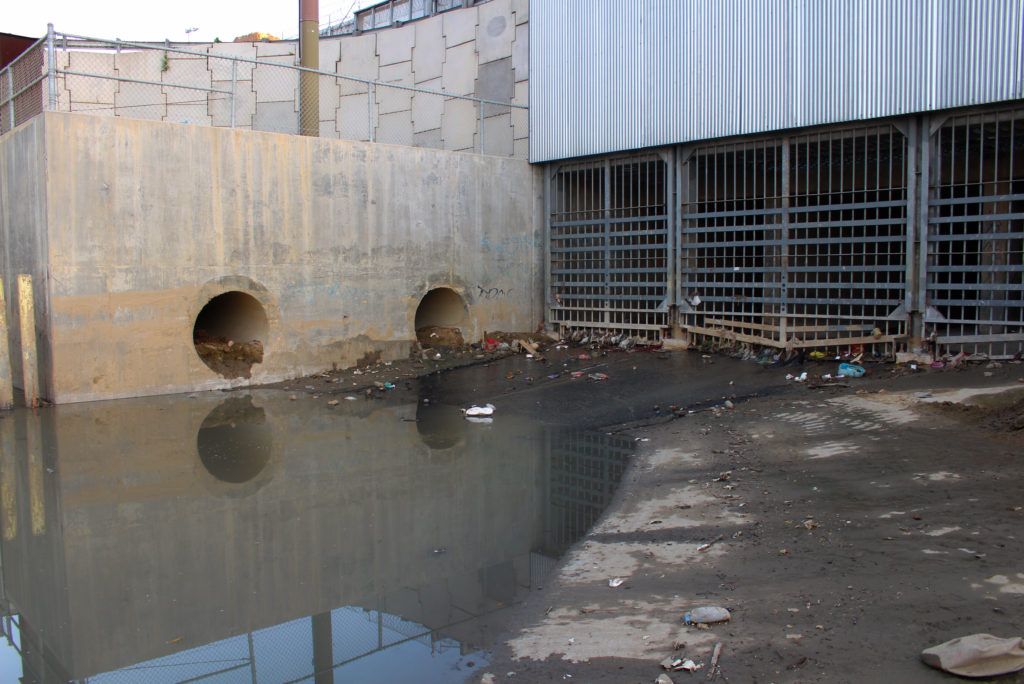Written By MacKenzie Elmer, Voice of San Diego

Republished per content sharing policy

My border-reporting colleague Gustavo Solis reminded us recently of the slow-going on solving the Tijuana River cross-border sewage problem despite more than a year of work by the U.S. Environmental Protection Agency to design a fix. As he put it, there’s been “little action” following an announcement that federal officials would be dolling out considerable cash.
That’s not the whole story.
There’s a proverbial $300 million check from the federal government to build something that will help stop raw Tijuana sewage from flowing into the United States (where it shut down public shoreline in Imperial Beach for almost half of 2020), and yes, we’re still waiting to hear what they’re going to spend it on.
But we got more clarity on Aug. 6, when the EPA said it had whittled down a list of about a dozen project ideas to three.
One option, which I’ll call “the whole hog” but the EPA calls the “comprehensive alternative,” would cost the United States a whopping $566 million. That’s because it tackles the EPA’s top projects on both sides of the border.
While it scored lowest in terms of cost effectiveness, it’s the only option that could keep Imperial Beach open almost all summer and reduce the most sewage (76 percent of it) from flowing over the border into the U.S. side of the river.
The plan involves something called river diversion, which basically amounts to running the river on the U.S. side through a new treatment plant (called advanced primary treatment) so that raw sewage doesn’t make its way to the Pacific Ocean (and Imperial Beach). That means the U.S. wouldn’t have to worry as much about spills from Tijuana’s unreliable sewage system.
The plan also builds a larger international wastewater plant to treat more of Mexico’s sewage (it was built too small to begin with), one of the top concerns of Imperial Beach residents from the start of this debacle.
It also calls for some other bells and whistles to tighten up the leaky watershed, for instance, in the border’s natural canyons, which collect a lot of polluted water flowing outside any riverbed or pipe. The plan adds a trash boom to the river’s flow to catch the junk that often clogs the sewer and river system. And it funnels U.S. dollars toward projects in Mexico like recycling some of the city’s wastewater for reuse and finally fixing a broken wastewater treatment plant where untreated Tijuana sewage flows directly into the ocean.
There are two other options, cuts of the whole hog, on the table. Each would curb less pollution but cost closer to the $300 million price tag (while still going over the budget).
The second option cuts Imperial Beach closures by 74 percent and more than half the over-the-border spills. It does everything but treat the whole river on the U.S. side and fix the broken Mexican plant — which EPA officials stress is the main problem for Imperial Beach in the summertime.
The third option doesn’t put U.S. money toward fixing the Mexican plant but treats about half the river water. It reduces over-border spills and polluted beach days by about 64 percent each.
Doug Eberhardt, who was the infrastructure section manager for U.S. EPA Region 9’s Water Division and worked on this issue since the ’90s, told me treating a whole river is not a common thing.
Think of it like a combined sewer system, which are more common in the Midwest where I’m from. Instead of separate pipes for sewage and stormwater (the water that runs into street drains when it rains) all that water goes through one pipe — or in this case, one river — to a treatment plant.
“A big issue here is, what’s the strategy?” Eberhardt said. “Do we try to treat the sewage before it gets into the river or do you use the river as your collection system and let the sewage get into the river,” then treat it.
Meanwhile, the Tijuana Slough Shoreline, the U.S. beach closest to the border, closed again on Aug. 8 after it failed a water quality test performed by San Diego County. (It’s since been reopened.)
 Written By
Written By
MacKenzie Elmer
MacKenzie is a reporter for Voice of San Diego. She writes about the environment and natural resources.




